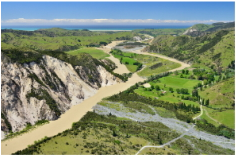Brief Brief Description
Earthquakes are one of the most costly and deadly natural disasters. APEC member economies are struck by the vast majority of the world's earthquakes and have a particularly high earthquake risk (see the world seismicity map). This has resulted in more than 800,000 deaths in APEC member economies of the approximately 1.3 million deaths associated with earthquakes this century.
The scientific method relies on development of a theoretical framework or simulation model describing nature. While no such model exists for the complete earthquake generation process, conceptual developments in understanding earthquake physics, numerical simulation methodology and advances in High Performance Computing offer the possibility to develop such models. The APEC Cooperation for Earthquake Simulation (ACES) would capitalize on this new opportunity and the complementary strengths of the earthquake research programs of individual APEC member economies.
It aims to develop numerical simulation models for the complete earthquake generation process (see a snapshot of a numerical earthquake simulation), to assimilate new earthquake observations into such models, to foster collaboration between the relevant programs of participating member economies, and to foster development of required research infrastructure and research programs.
Development of such simulation models represents a grand scientific challenge because of the complexity of phenomena and range of scales involved from microscopic to global (see the figure). The models would provide powerful new tools for studying earthquake precursory phenomena and the earthquake cycle. They would have direct application to earthquake hazard studies and earthquake engineering, and the potential to yield spin-offs in sectors such as mining, geophysical exploration, high performance computing, material science, engineering and geotechnical.











评论已有 0 条